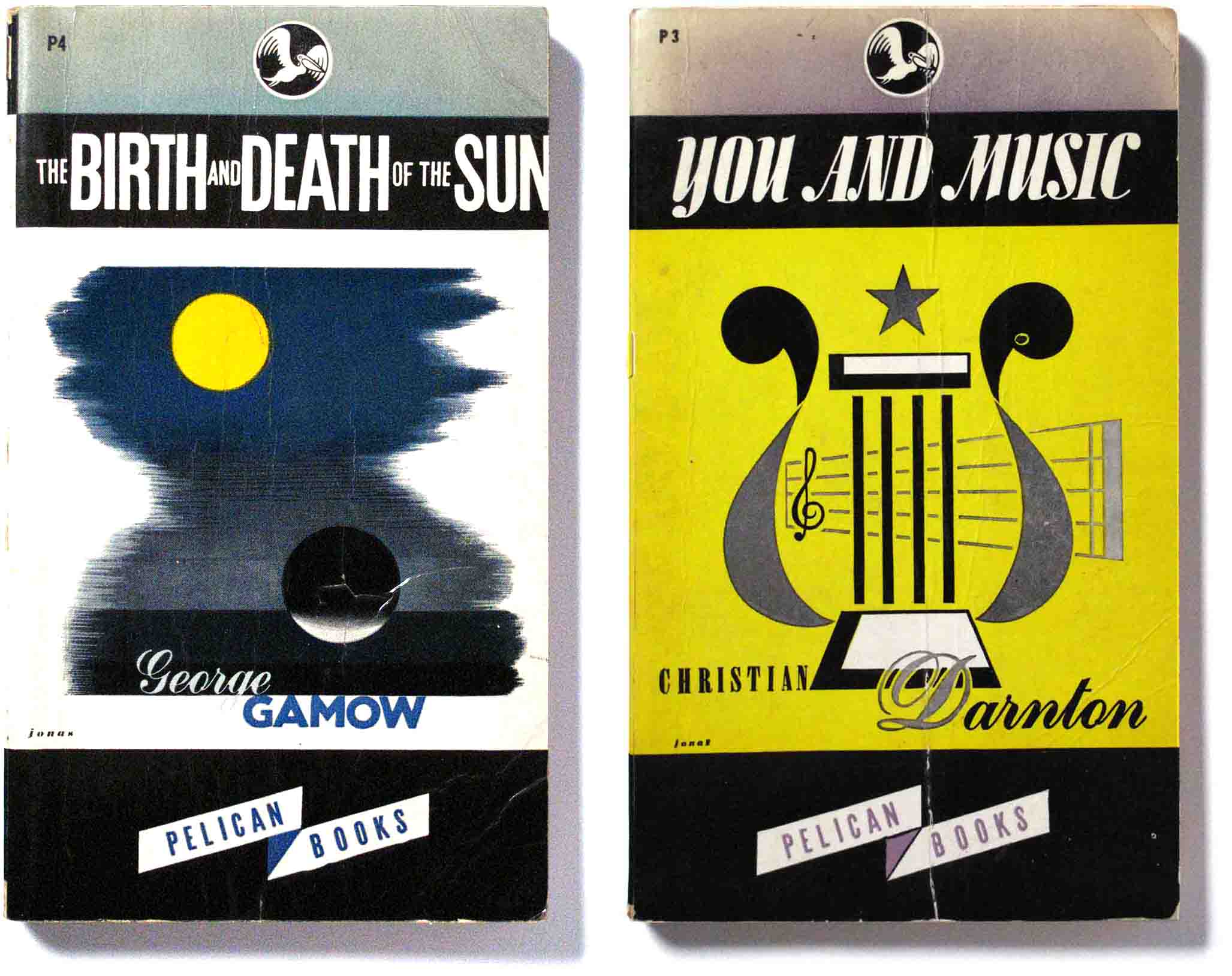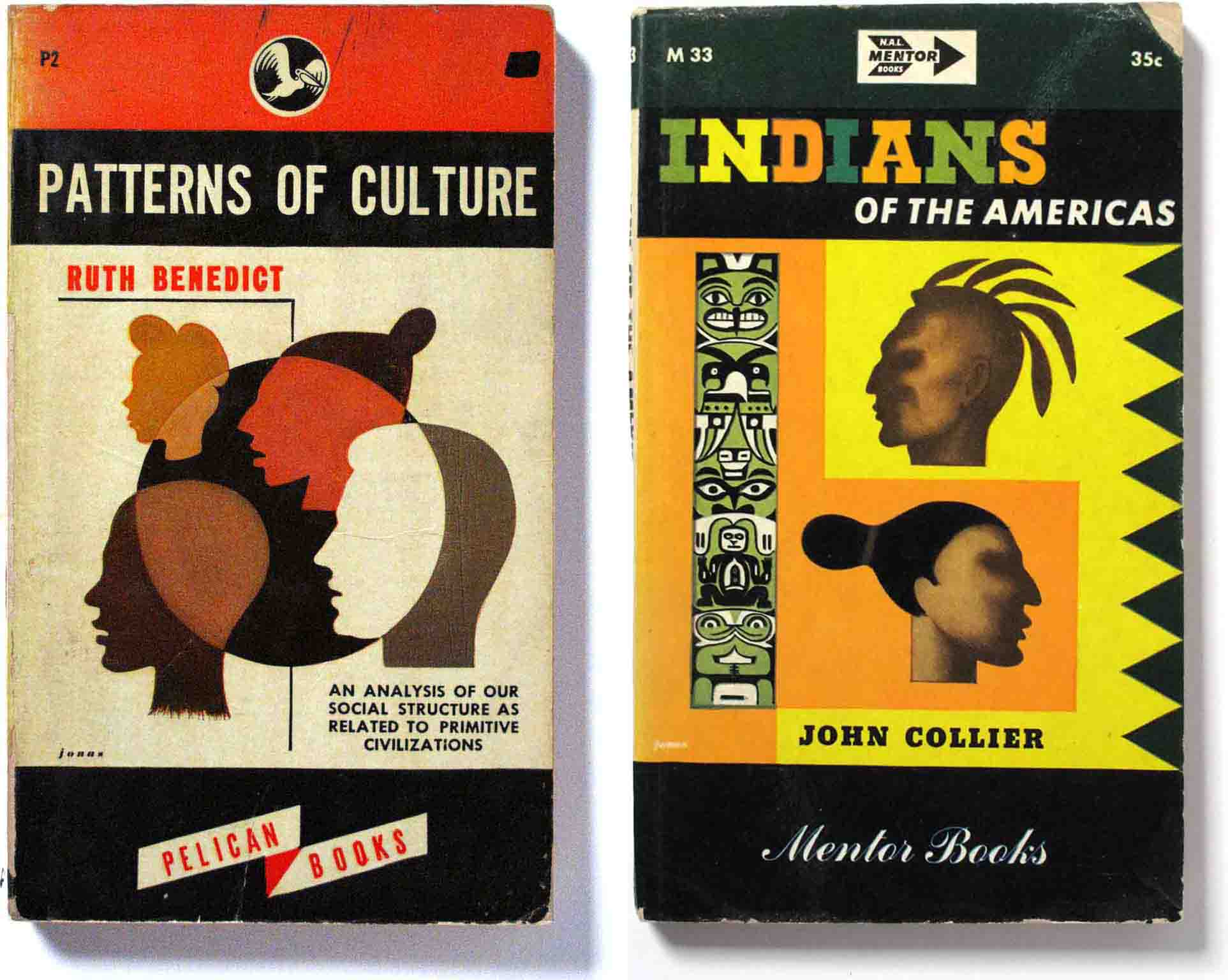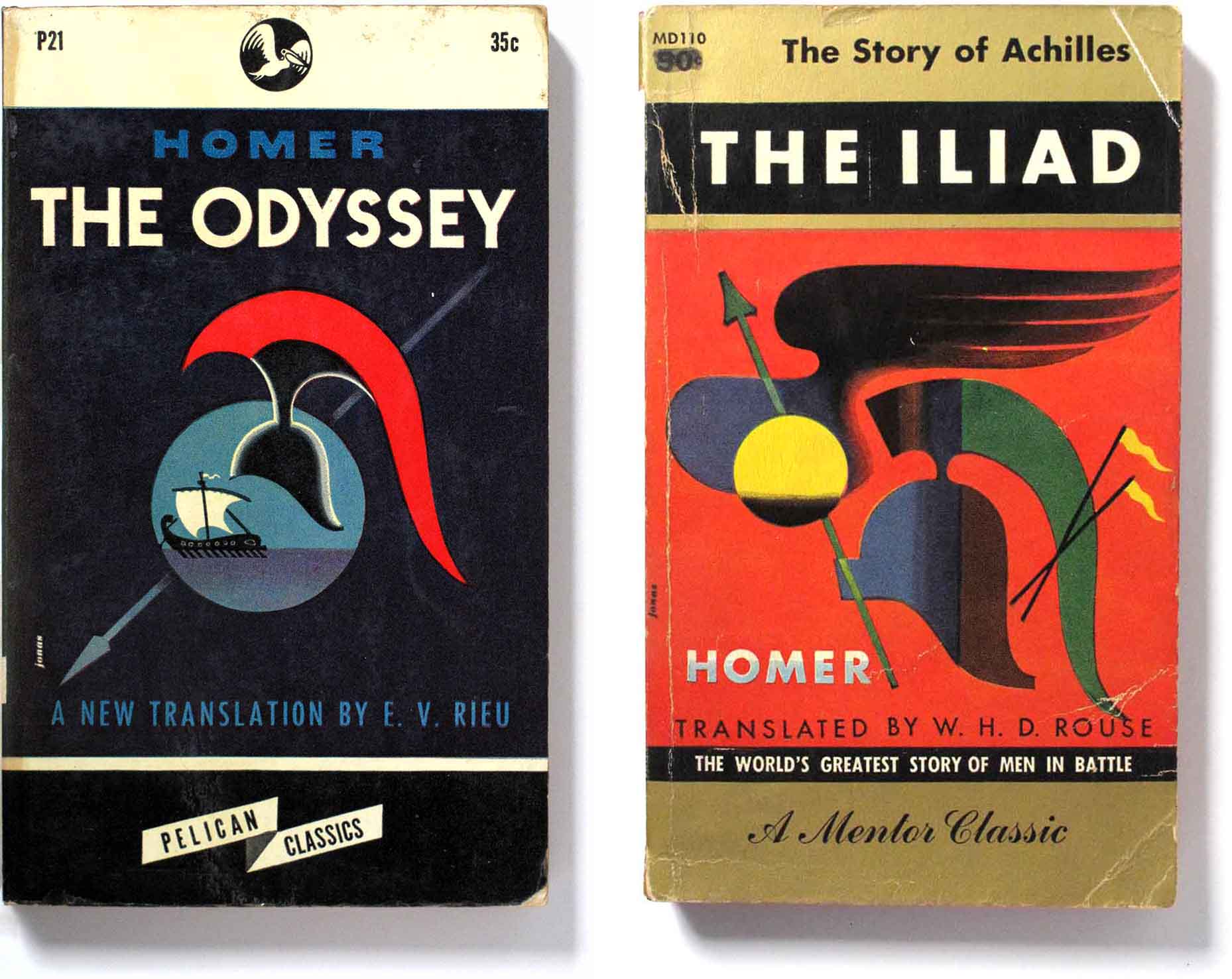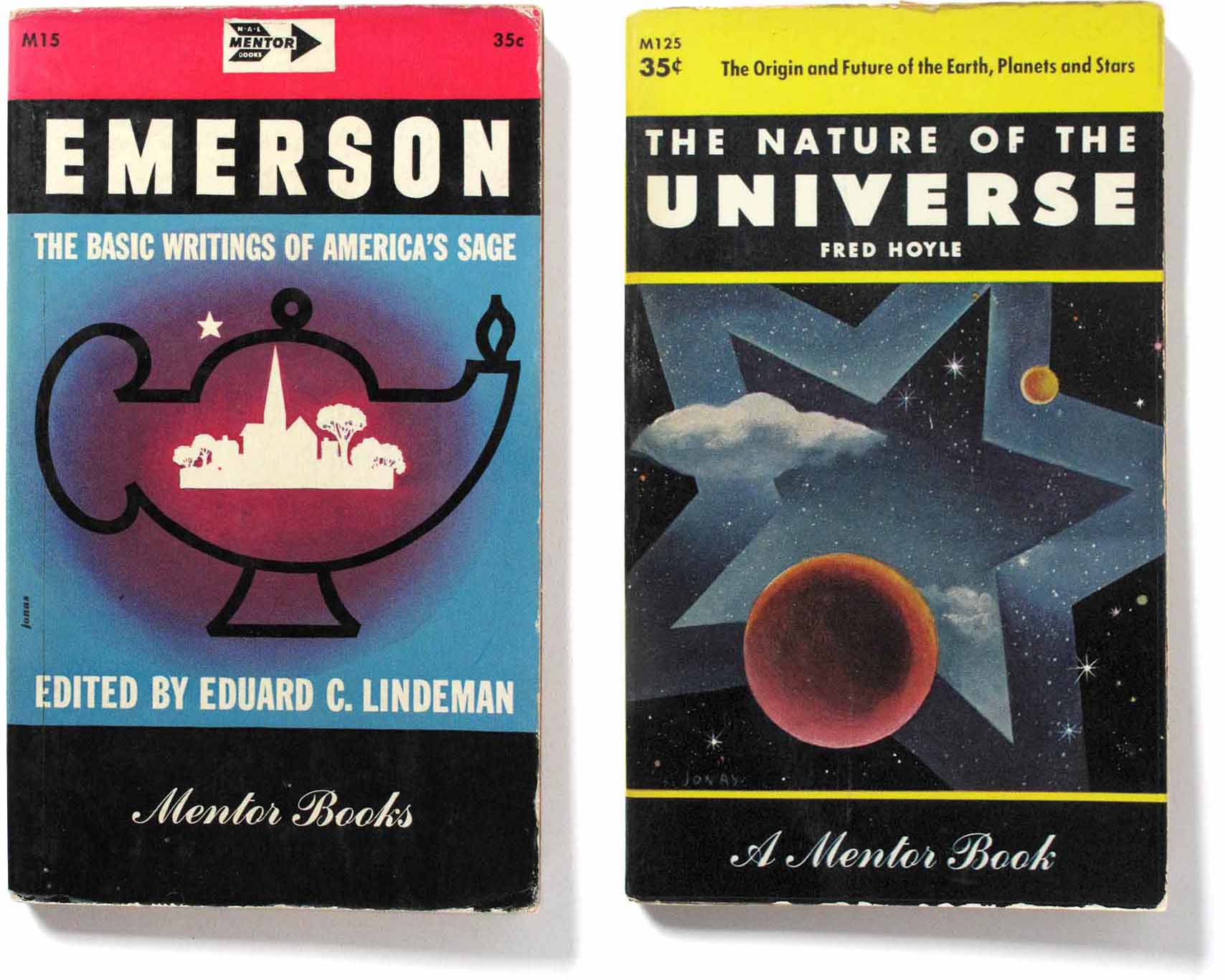
Pelicans first appeared in 1937 when Penguin Books wanted to expand their lists into the non-fiction market. British Pelicans sported pale blue covers in much the same grid as the general list, created in 1935.
The first two titles were George Bernard Shaw’s The Intelligent Woman’s Guide to Socialism, Capitalism, Sovietism and Fascism, volumes 1 and 2. It was an instant hit and the category grew quickly. Consider the publishing nous that led to a book with this title written by this author at this time: the lead up to World War Two.
For a personal touch, the copy you see below was my father’s, a politically-minded man who probably bought it at this time. If he did, he valued it enough to keep it for sixty years.

American Pelican
When Penguin Inc., the American branch, started up in 1945-46, it became clear that the plain English wrapping did not cut it in the US market where colourful illustrated covers were demanded. Against the constant objections by Alan Lane and his brother Richard illustrated covers appeared on all the American titles. Most were by Robert Jonas, an artist with a distinctly modern mindset, whose designs were influenced by contemporary European art movements.

The transition to Mentor
In 1948 the American branch, Penguin Inc., became The New American Library (NAL) after Alan Lane sold his US operation. New brand names were applied to the fiction and non-fiction categories: Signet for fiction books and Mentor for non-fiction.

Even though NAL was a new and separate company the visual appearance of their books changed little from Penguin. The artist Robert Jonas was retained for cover design and the grid was kept much the same. The Mentor brand kept visual continuity with Penguin style longer than its sister brand Signet where James Avati and other realist illustrators took over (see my post on this). At Mentor Robert Jonas covers, with their bold colours and modernist abstractions, stayed well into the 1950s, and even into the 1960s through reprints. By then, Jonas had left NAL to work for hardcover publishers.

Note the stylistic continuity in the above translations of Homer. The Odyssey is a Penguin, and The Iliad is a Mentor. It seems strange that Alan Lane would have approved of a new publisher copying the style of his own books, despite having already closed the American branch.

Changing styles at Mentor

The above contrasting covers show the drift toward conservative realism at Mentor, possibly inspired by the James Avati covers at Signet. Robert Jonas illustrated both of these, though only the lefthand cover reflects his modernistic preferences. The stark graphic arrows over the black & white photograph are a combination familiar in the work of Paul Rand. It is the epitome of Mid-Century Modern graphic ideas.
The rather fussy realism of the Schweitzer book on the right was also made by Jonas as part of the Mentor regime in the conservative 1950s. To his admitted shame, Jonas produced realistic covers for Westerns, signed as “Rob-Jon” to conceal his identity, and this cover was apparently made in the same context.

Many Mentor covers in the 1950s retained at least a flavour of Jonas’ modern style, but the stolid literalism exemplified by the above titles on Maugham and Lenin also played a part. They strongly resemble the covers of Time Magazine which also featured accurate renderings of “great men” in the news.